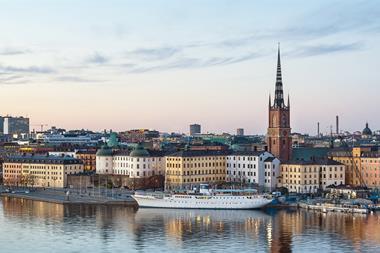The EU’s EV tariffs will fuel a surge in demand for European industrial facilities as companies seek to reduce supply chain risks and costs, writes Jaromir Cernik
Are we on the brink of a new trade war between Europe and China? That has been the subject of some quite heated debate in recent weeks, after the European Commission unveiled proposals to impose a tariff, selectively, of up to 38.1% duty on Chinese electric vehicle (EV) imports into the EU, in a bid to protect Europe’s car industry.

Leaving aside the arguments for and against the proposals, two things are clear. Firstly, the tariffs, and trade barriers of any kind, will accelerate the nearshoring trend in Europe, which is seeing global companies bring production closer to their end markets to secure their supply chains.
And, secondly, this will drive further demand for best-in-class European industrial and logistics (I&L) space. But which countries and markets could benefit? And what type of I&L space will be in demand?
At CTP we have been experiencing the impact of nearshoring first hand, as global companies seeking to expand or relocate production to Europe has led to a surge in demand for I&L space.
This global megatrend has been driven by the Covid pandemic, as well as geopolitical tensions and increasingly protectionist regulations from governments, with the EU’s proposed EV tariffs only the most recent example.
Last year we opened our first office in Asia to service the growing demand from Asian businesses to either relocate or expand their production capabilities closer to their European customer base.
Tariffs on Chinese EVs will no doubt further fuel the rapid relocation of automotive production, as final assembly manufacturers and tier one and tier two automotive suppliers invest in plants in Europe to protect their export market.
This will impact not only on Chinese companies, but European and other global businesses that have operations in China.
Central and Eastern Europe (CEE), where CTP has been operating since 1998, has been a real beneficiary of the nearshoring trend and has become the destination of choice for high-tech manufacturing. This is due to a combination of factors, including its proximity to Western European markets, a strong manufacturing base, a wealth of skilled human capital, attractive labour costs, excellent market connectivity and robust and growing economies.
When it comes to the automotive industry the region is also going from strength to strength. Since 2015, car production in the CEE countries has increased by 41%, with the region surpassing Germany in nominal car production in 2022.
Automotive firms have expanded car productions to the CEE countries and production volumes have now exceeded their pre pandemic levels.
CTP currently has automotive sector clients in almost all markets we operate in, representing 20% of its total portfolio across Europe.
Overall, there are currently around 33 car manufacturing plants across the CEE. Although Western European brands, mainly from Germany, France and Italy, are dominant, Asian manufacturers, such as Hyundai, Toyota and Suzuki, play an important role, while demand from Chinese automotive brands and suppliers is fast growing.
Chinese carmakers are particularly interested in Hungary, partly because the relationship between the two governments is generally cordial, making it easier to get established in the country. Serbia is also another market of interest, despite being outside the EU, due to the lack of bureaucracy and a strong and young labour market.
CTP is also seeing increased Chinese investment activity in Slovakia and Romania.
When it comes to the I&L space for automotive businesses, there are certain factors that are critical. On a general level, the business park location must have excellent road, rail, and even local airport connections.
Leasing space is also often seen as a more attractive option than ownership. This is because the often lengthy and complex procedures required for building permits and volatile supply and build costs involved in owning are seen as high-risk and inflexible.
Most requirements also come with tight timelines which cannot accommodate lengthy greenfield developments.
In terms of the facilities, automotive businesses have very specialised and customised requirements. We have provided a range of unique solutions, including extensive assembly and production areas, high-precision environmental controls, ample storage for parts and finished items/vehicle storage, ESD floors [floors that prevent the build-up of electrostatic charge that can harm sensitive electronic components], and clean rooms.
The facilities also feature integrated logistics spaces with drive-in bays and advanced security systems, catering to the unique needs of automotive manufacturing and distribution. These so-called above-standard requirements [ASTI] can be satisfied because CTP are also general contractors.
Importantly, these customers also need advice and expertise to help them navigate the complex local, national and EU regulatory framework and obtain all the necessary permits and achieve compliance.
More generally, as large global companies, these automotive businesses require business parks that help them meet their own ESG commitments, so high sustainability credentials are a pre-requisite. They also want locations that have a good range of amenities that will help them attract and retain a talented workforce.
Typically, we guide Asian clients during the whole establishment process including the building design and completion, local environmental compliance and other domiciliation services.
Ultimately, we see the nearshoring trend, with more production in Europe for Europe, only growing in importance. Tariffs on Chinese EVs will no doubt accelerate that, but we see the trend continuing in any case.
At the same time, we see increased demand for artificial intelligence and control systems in communication and mobility [demand for chips], and innovation in energy solutions [demand for battery and storage] shaping industry and supplier networks in Europe in the next few years.
All of this means increased demand for best-in-class I&L space. Investors who act sooner to capitalise on these trends will be better placed for the future.


















